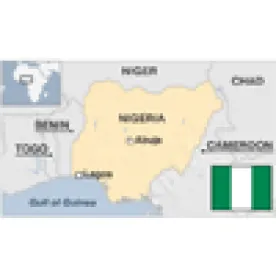On 12 January, the London-based private equity group Helios Investment Partners announced that it had exceeded the $1 billion target that it had set for Helios Investors III, L.P., or “Helios III”, thus making it the first $1 billion-plus private equity fund for African investments. Founded in 2007 by Nigerian-born Tope Lawani and Babatunde Soyoye, Helios has already established two funds for the purpose of investing solely in Africa. (Helios Investors II, L.P. or “Helios II” held the previous record for the largest private equity fund in Africa, which it raised in 2011, of $908m). Approximately sixty percent of the capital committed to the new fund came from Helios’ existing investors which include sovereign wealth funds, corporate and public pension funds, endowments, foundations and development finance institutions across the US, Europe, Asia and Africa.
Helios III will follow the same investment strategy as Helios’ two other funds, and it will acquire and build market-leading, diversified platform businesses which are operative in the core economic sectors of key African countries. Helios III so far has been used to acquire an interest in ARM Pensions, which is Nigeria’s largest independent pension fund manager, with over $2.2 billion of pension assets under management.
Commenting on Helios’ approach to investing in Africa, Mr Lawani stated that “much has been made of the rise of the African consumer, and that does, from time to time, give rise to potential investment opportunities. However, as discretionary incomes remain low and the cost of basic goods and services is high, Helios believes that addressing the supply side of the economy is generally more attractive. Helios’ strategy focuses on investing in businesses that lead the provision of core economic infrastructure: de-bottlenecking the economy, increasing efficiencies and reducing living costs for households and operating costs for businesses.”
In an interview with the Financial Times, Mr Lawani stated that the size of the capital raising and the participation of pension funds and sovereign wealth funds is a sign that private equity in Africa is maturing and moving out of its infancy. Indeed, according to data prepared by the African Private Equity and Venture Capital Association (AVCA), the aggregate deal value of African deals that occurred in 2013 was $3.2b. This figure is a significant increase from the $1.6b recorded in 2012.
The positivity in the African market is evident from the 2014 Global Limited Partners Survey which revealed that Sub-Saharan Africa ranks in the top three of the most attractive emerging markets for general partner investment. The interest in this region is evident from the PE deals that occurred there in 2014. For example, KKR announced its first investment there, spending $200m to buy a flower company based in Ethiopia. The Carlyle Group announced a $591m close on its $500m-target initial African fund. Blackstone entered a partnership with Africa’s richest man, Aliko Dangote, to invest in the region. In addition, Africa started to attract state-owned funds, including the Investment Corporation of Dubai, Temasek of Singapore and China Investment Corporation.
According to a joint study of private exits in Africa by the AVCA and EY, trade sales remain the key exit route for investors in Africa. Additional exit routes have however appeared in recent years, including sales to other PE firms, and this is indicative of the maturing private equity market in Africa. Exits via public markets are not very common in Africa, largely because of the small size of the exchanges outside South Africa. Nevertheless, the study provides that stock sales on public markets and IPOs were the best performers of all exit route and this mechanism is expected to become even more important when the public markets in Africa develop further.
Exits were down in 2013 as compared to previous years; the number of PE realizations in Africa declined to 27 in 2013, down from 35 the year before and 29 in 2011. It has been claimed that the reason for the decline in the number of exits in 2013 was due primarily to two external developments: first, the announcement by the US Federal Reserve that it would taper its program of quantitative easing, and, secondly, the fact that Africa’s two key trading partners, China and India, both saw a slowdown in their growth rates in 2013. However, on a positive note, the pipeline is filling up as investments made over more recent years become ready for sale. Also, the total entry enterprise value for exits has been increasing year-on-year since 2009, including in 2013.
A recent report provides that the medium term outlook for raising Africa-specific funds is strong and that large global PE firms are looking at the market to capitalise on the growing investment opportunities available on the continent in the infrastructure and resources sectors and also in the consumer-backed sectors such as financial services, agribusiness, retail, education and healthcare. The report predicts that sectors such as power, logistics and infrastructure will also attract investment as increasingly wealthier populations will require the development of the continent’s infrastructure. It also forecasts that there will be opportunities in the power production space as privatisation takes place in Nigeria, and also in the banking and financial services sector, as the government there starts to divest its holdings in financial institutions that it obtained under the Asset Management Corporation of Nigeria (AMCON) program. This confident outlook on the Nigerian landscape was also alluded to by the head of west Africa at Carlyle who told the Financial Times that Carlyle had a strong pipeline of potential deals in the continent and said that it was particularly bullish about the long-term potential of Nigeria.




 />i
/>i
